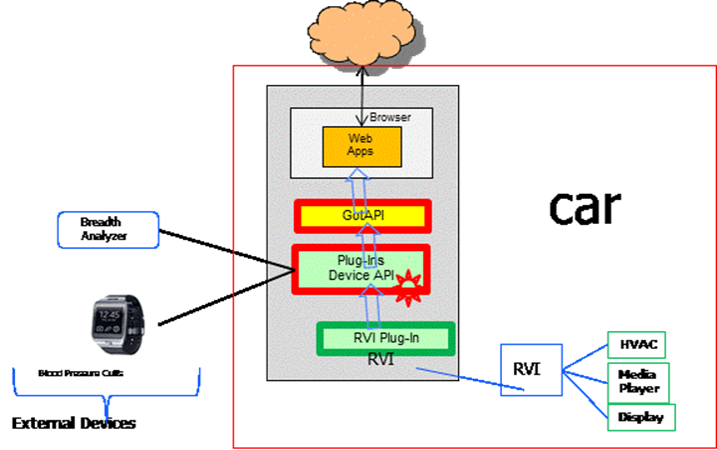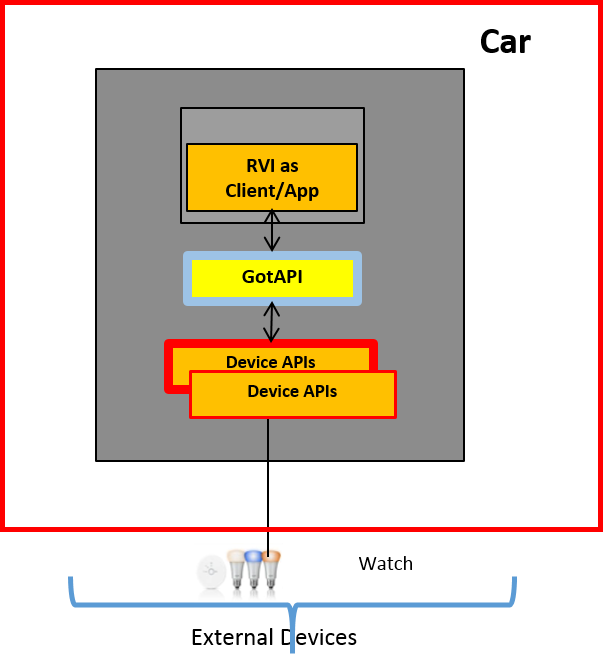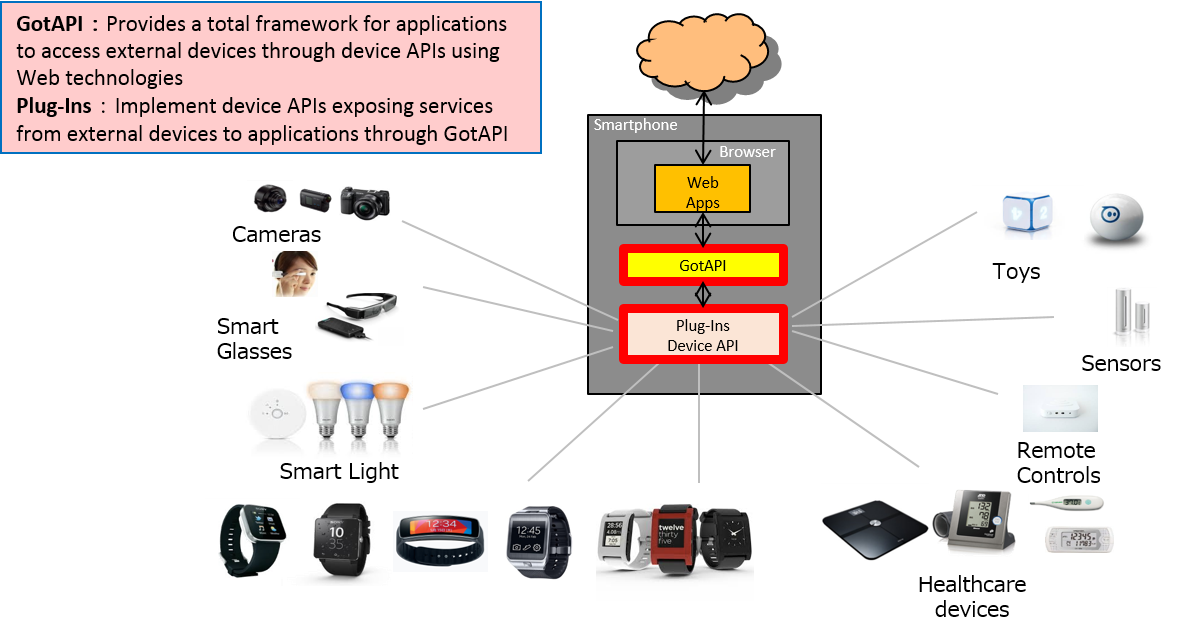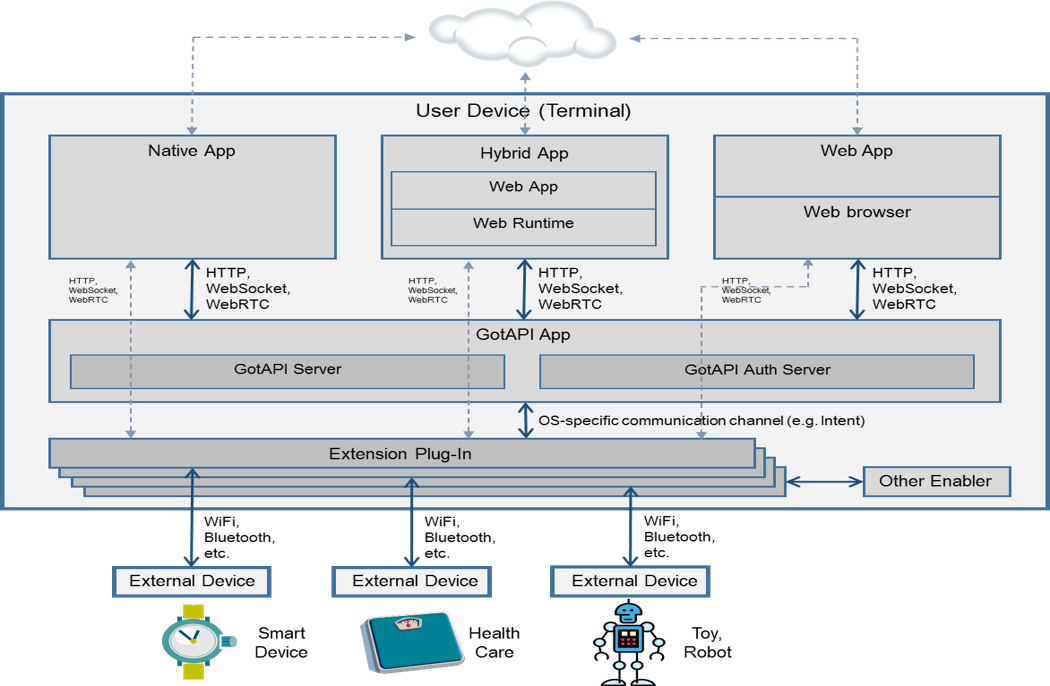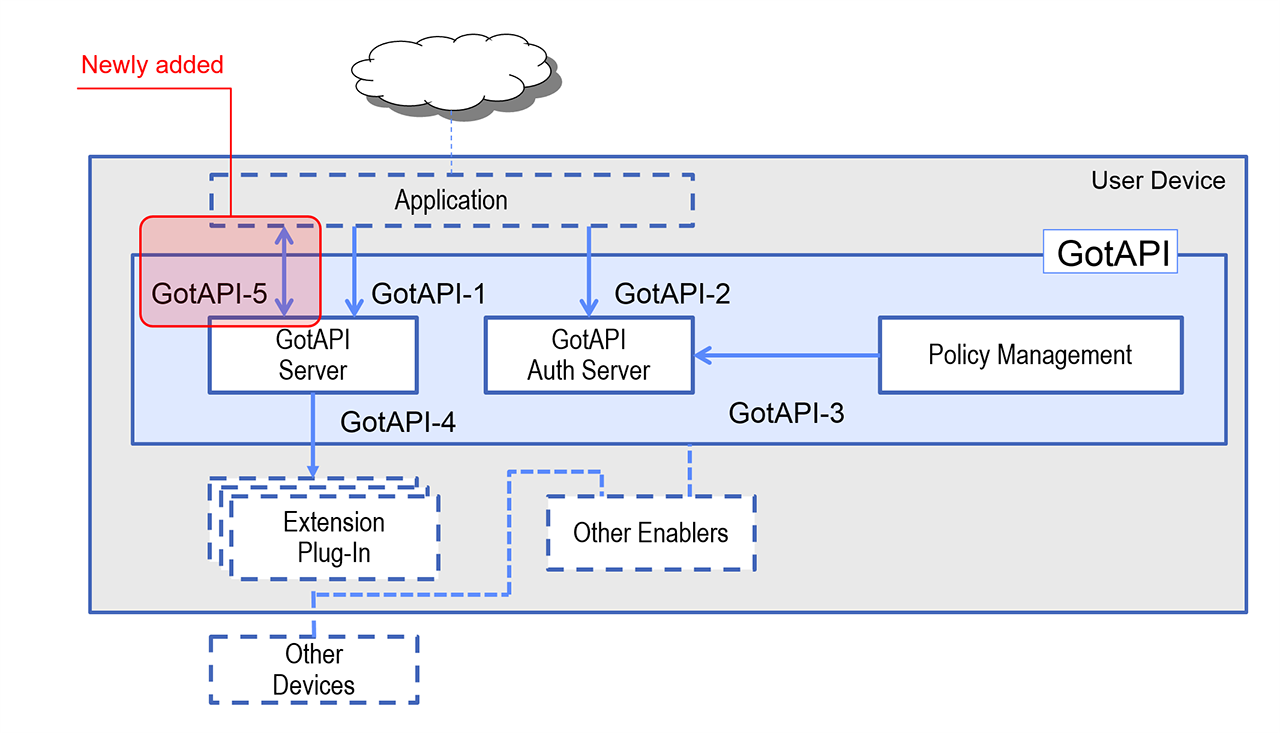This is a draft of the report being created by the OMAuto Incubator Group at OMA. Feel free to edit this report if you have something of value to contribute.
If you want to add or edit an image on this page, download the file OMAuto Incubator Report Diagrams.pptx PowerPoint deck and follow the instructions. If you don't have PowerPoint, follow these instructions:
- Images in source format other than Microsoft Office Graphic (Powerpoint) should be edited by other tools and uploaded to the wiki in the source format, for future updates. Once finished editing, save the image as a PNG with filename per the caption of the image in the report.
- Edit the wiki page, and use the “Files” tool to upload the image. If you are updating an image with the same name, you don’t need to re-insert it, so deselect the checkbox on the image and select close.
Table of Contents
1. Scope
1.1 OMAuto Goal
- Establish a venue for discussion between telecom and automotive at a technical and industry level to establish any network, any automobile connectivity.
- Adapt select current specifications to optimize for the needs of the Automotive market.
- Create a path for Auto industry to interface with the rest of IoT via standardized enablers.
- Bridge existing standards with standardization efforts in the Automotive sector.
Enable a path for automakers and operators to encourage communications interoperability across automotive and wireless industries.
1.2 Deliverables
Medium = technical report with a set of agreed recommendations to drive future standardization work (25-50 pages)
- Get agreement across participating parties as to what work needs to be done and where (which SDO) it needs to be done.
- Examine landscape across mobile and automotive environment
- Identify areas of overlap across industry work groups (RVI, W3C, GSMA, 3GPP, OMA, Smart Device Link, Apple CarPlay and Android Auto, OCF, etc…)
- Produce use cases/examples including interaction between IoT and automobile
- Roadmap and proposed timeline of future work needed, for example
- Security-related issues
- Enabler creation or reuse to facilitate development of enhanced services
- Work with additional verticals (environmental, safety, healthcare)
- Deliverables publication to be public and available online
- Reference code-based projects already underway
- Clarify what should be standardized, open source vs. proprietary to encourage interoperability
- Other TBD
2. References
| Reference | Details |
|---|---|
\[GotAPI\] | Generic Open Terminal API Framework (GotAPI), Candidate Version 1.1 – 15 Dec 2015, Open Mobile Alliance, http://technical.openmobilealliance.org/Technical/technical-information/release-program/current-releases/generic-open-terminal-api-framework-1-1 |
| \[DWAPI\] | Device WebAPI-PCH, Candidate Version 1.0 – 19 Apr 2016, Open Mobile Alliance, http://technical.openmobilealliance.org/Technical/technical-information/release-program/current-releases/oma-device-webapi-v1-0 |
3. Terminology and Conventions
3.1 Conventions
This is an informative document, which is not intended to provide testable requirements to implementations.
3.2 Definitions
| Term | Meaning |
|---|---|
| |
3.3 Abbreviations
| Abbreviation | Meaning |
|---|---|
| DWAPI | Device WebAPI |
| GotAPI | Generic Open Terminal API |
OMA | Open Mobile Alliance |
4. Introduction
4.1 Observed Problem
- Problem statement 1
- There are a series of initiatives in the automotive industry that will touch the mobile environment
- There is work going on in the mobile/IoT industry that will need to interoperate with automobiles
- It is important for all not to waste resources by “reinventing the wheel”
- Use good protocols that already exist and are deployed
- There are a number of one-to-one company level programs underway, there is NOT a conversation happening at the industry-to-industry level to insure standards-based interoperability and reduce fragmentation of protocols across automotive interacting with IoT and mobile services
- The overall needs of the automotive industry are not being translated into mobile/IoT industry developments – harmonization of requirements and solutions between the mobile and the automobile environments. What are the problems the automotive industry are trying to solve?
- Problem statement 2
- The auto industry wants to ensure openness and mobile device interoperability in relation to the automotive telematics systems
- Automakers run the risk of becoming a “dumb device” with no control over user data
- Operators and automakers could be forced to the sidelines where consumer touch, data collection and ownership are no longer future revenue sources
- Existing automotive approach of proprietary implementations is no longer working
- SDL - Smart Device Link, an open source implementation of Ford’s AppLink (Ford Sync) software libraries enabling smartphone integration across all radio levels and brands of devices (Apple, Android, Windows, etc.)
- RVI - Remote Vehicle Interaction, an open source project by JLR Research Centre in Portland, OR. Enables universal connectivity to the vehicle bus transparently across LTE, Wi-Fi, Bluetooth, 3G, NFC and future networking technologies by embedding a standard software module in the vehicle head unit.
- SOTA - Software Over The Air (included in RVI above) through the entire vehicle (ASIL grade Safety and Security)
4.2 Hot Projects in Open Automotive
- SDL - Smart Device Link, an open source implementation of Ford’s AppLink (Ford Sync) software libraries enabling smartphone integration across all radio levels and brands of devices (Apple, Android, Windows, etc.)
- RVI - Remote Vehicle Interaction, an open source project by JLR Research Centre in Portland, OR. Enables universal connectivity to the vehicle bus transparently across LTE, Wi-Fi, Bluetooth, 3G, NFC and future networking technologies by embedding a standard software module in the vehicle head unit.
- SOTA - Software Over The Air (included in RVI above) through the entire vehicle (ASIL grade Safety and Security)
5. Automotive Opportunity
5.1 DM
5.2 OMA Device APIs
Through OMA enablers focused on device APIs, we can enable automotive (Auto) systems to offer API services to apps running in app environments provided by the Auto system. Such API services can enable apps to access vehicle information/services or other connected devices. These OMA enabler APIs are based upon the Generic Open Terminal API (GotAPI) \[GotAPI\] enabler framework described in section 6.2.
5.2.1 Example Use Cases for OMA Device API use in the Auto Environment
OMA device APIs can enable synergy between app use cases in the Auto environment (e.g. driver safety, IoT, etc) and evolving Auto technologies. For example:
- An Auto system app can monitor driver vital signs (heartbeat, breathing rate, temperature, blood pressure, etc)
- A user can download an RVI app providing Mobile Keyless Entry to their smartphone, and use it to unlock the vehicle
- Auto system apps can also discover other external sensors, e.g. road sensors, outside air quality sensors, etc
Through the two basic roles below, Auto systems (e.g. an RVI) that host a GotAPI-based API server can support a wide variety of use cases for apps running in the Auto system, e.g.
- the Auto system can offer vehicle information/services to apps running in an Auto Web runtime environment
- the Auto system can act as a GotAPI client in accessing information/services provided by connected devices
These use cases are illustrated below.
Use Case A: Web apps (e.g. an Auto Driving Lessons Coach) can access the RVI data and external device data through GotAPI/Device API. GotAPI enables the Web app to access RVI information/services without needing to implement the RVI-specific interfaces:
Use Case A
Use Case B: An RVI can access external device information/services, e.g. exposing access to a home lighting system.
Use Case B
6. Automotive Industry API definition projects comparison
6.1 W3C Automotive Web API (PAUL B / TED)
6.1.1 Overview and objective of project...
6.1.2 API's defined
6.2 OMA GotAPI and DWAPI
This section introduces the OMA Generic Open Terminal API Framework (GotAPI) v1.1 enabler, and the GotAPI-based Device WebAPI (DWAPI) v1.0 \[DWAPI\] enabler. At a high level, GotAPI leverages widely supported Web technologies to enable a GotAPI server host (e.g. the Auto system) to provide an easy-to-integrate framework for apps to register and authenticate, discover available API services, access those API services, and secure the data exchanged between apps and other devices/services accessed through the GotAPI server. Without GotAPI, apps typically would have be designed to support the specific methods through which other devices/services are accessed, e.g. a variety of APIs, protocols, and connection bearers.
DWAPI builds upon GotAPI in defining Web-based APIs used to access healthcare devices through IEEE-specified interfaces. Additional APIs such as for 3D printer access are in development at OMA.
Overview: Various External Devices Working with Apps Through GotAPI
GotAPI Architecture
GotAPI defines how apps and the GotAPI enabler components interact through the interfaces illustrated below:
- GotAPI-1: enables applications to make API requests and receive responses. This interface is generically specified by GotAPI, as GotAPI-based API specifications will define specific request/response transactions that can be utilized in host devices based upon the available interface technologies, payload protocols, and their applicable design patterns. These options include:
- The interface technologies TLS 1.2, HTTP/1.1, HTTP/2, Server-Sent Events
- The design patterns REST and JSON, such as JSON-RPC
- A Temporary Server Feed (TSF) mechanism for binary data responses and triggering a different protocols
- The initiation of the asynchronous messaging interface, GotAPI-5, to use WebSocket
- GotAPI-2: enables applications to obtain authorization for access to GotAPI-based APIs. This interface is fully specified by GotAPI, being a common (though optionally used) support function for all GotAPI-based APIs. GotAPI-2 supports bindings and request/response transactions that can be utilized in host devices based upon the available interface technologies. These options include the interface technologies TLS 1.2, HTTP/1.1, HTTP/2, and URI scheme handling. The GotAPI-2 interface is based upon the concepts of OAuth, though with different semantics as necessary for adaptation to the available interface technologies.
- GotAPI-3: enables the remote provisioning of API access authorizations through a policy management function, which may include one or more of:
- OMA Device Management, using a Managed Object (MO) to be defined in a future version of the GotAPI enabler
- An implementation-specific policy management service
- GotAPI-4: enables Extension Plug-Ins for external devices and internal enablers through which they communicate with the GotAPI Server. Note that host-device-internal enablers/applications may also be connected to GotAPI servers directly in implementation specific ways without using the GotAPI-4 interface and Extension Plug-Ins.
The Extension Plug-Ins are independent applications. They are the mediators between the GotAPI Server, and external devices and internal enablers/applications. Typically, there are expected to be multiple Extension Plug-In applications installed on a device by the user or preinstalled on the device.
The GotAPI-4 interface provides the following functions with respect to Extension Plug-Ins:
- Plug-In Discovery: GotAPI-4 Plug-In Discovery enables the GotAPI Server to discover the targeted Extension Plug-In which an application wants to access and communicate with.
- Service Discovery: GotAPI-4 Service Discovery enables the GotAPI Server to find all the services provided by an Extension Plug-In. In this context, the "service" means an external device or a function provided by an internal enabler through an Extension Plug-In. The Service Discovery provides not only the list of services but also the availability of each service at the time.
- Approval: GotAPI-4 Approval is the function to ensure security, especially to protect users’ data and privacy from unwanted exploits, so that the users can safely use the application with external devices and enablers that are connected via Extension Plug-Ins.
- Data Forwarding: GotAPI-4 Data Forwarding is the function that enables an application to communicate with the targeted Extension Plug-In through the GotAPI Server. Data Forwarding takes place after Plug-In Discovery (optional) and Approval processes have been successfully completed. GotAPI-4 Data Forwarding uses the “pass-through” mechanism, so that the application can access and communicate with the APIs that (i) are implemented in the Extension Plug-In and (ii) expose the features of the external devices or internal enablers.
- GotAPI-5: The GotAPI-5 interface enables applications to listen to asynchronous messages from Extension-Plug-Ins via the GotAPI Server using WebSockets.
GotAPI Interfaces
6.3 LWM2M (AMIT S / PADHU)
6.3.1 Overview and objective of project...
6.3.2 API's defined
6.4 OneM2M (ELIZABETH to identify lead)
6.4.1 Overview and objective of project...
6.4.2 API's defined
6.5 GENIVI Remote Vehicle Interaction (RUDI S to collaborate with Magnus/Magnus)
6.5.1 Overview and objective of project...
6.5.2 API's defined
6.6 OCF IoTivity (SANJEEV)
6.6.1 Overview and objective of project...
6.6.2 API's defined
Please focus on overall expected penetration of OSS work in IoT market
6.7 OMA-DM and vehicle security (YAIR N)
6.7.1 Overview and objective of project...
6.7.2 API's defined
7. Analysis and recommendations to achieve interoperability (JOEL H)
